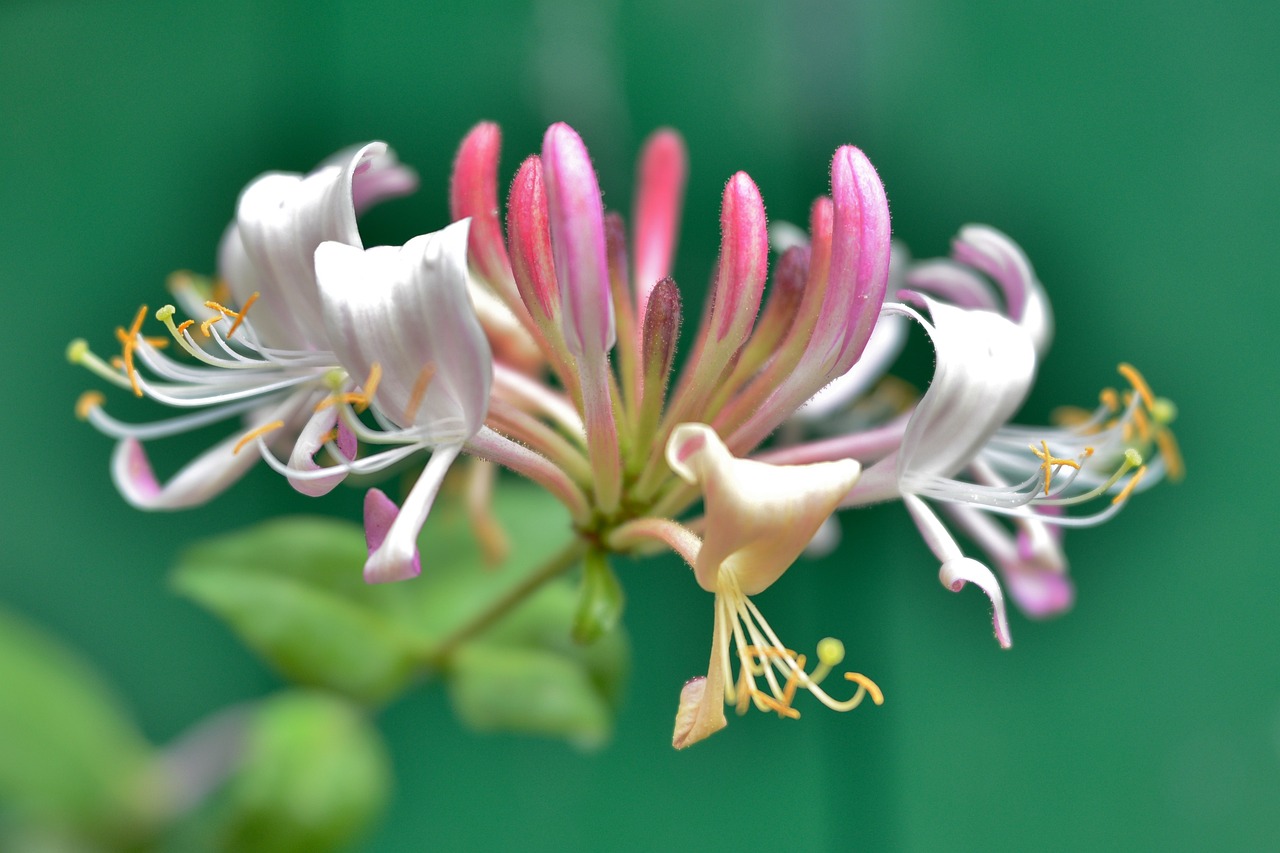
Forget diamonds, a girl’s (or guy’s!) best friend is a vibrant wildflower patch. These botanical beauties aren’t just a feast for the eyes; they’re an irresistible siren song to our buzzing pollinators, the bees. And a happy bee population means a thriving, fruitful garden. So, let’s ditch the tired tulips and predictable petunias and embrace the untamed allure of The Wild Flowers That Will Have Bees Flocking.
1. Honeysuckle: Nature’s Candy Can
Imagine the intoxicating sweetness of jasmine and honey intertwined, then drape it over a vine that twirls and climbs with abandon. That’s honeysuckle. This floral charmer comes in a rainbow of hues, from creamy white to fiery orange, and its long, trumpet-shaped blooms are an open invitation to hummingbirds and bees alike. Honeysuckle’s intoxicating fragrance will have you lingering by its side, just like the pollinators who can’t resist its nectar-rich embrace.
Planting Tips for Honeysuckle:
- Honeysuckle thrives in well-drained soil and appreciates at least 6 hours of daily sunshine.
- Provide a trellis or other support structure for its twining tendrils.
- Prune lightly after flowering to maintain its shape and encourage bushier growth.
2. Black-Eyed Susan: A Beacon of Cheer
Sun-kissed petals the color of sunshine frame a dark, mysterious center – Black-Eyed Susan is a wildflower that stops you in your tracks. Standing tall and proud on sturdy stems, these cheerful blooms radiate warmth and energy, attracting an entourage of busy bees with their promise of sweet nectar. Black-Eyed Susan is a magnet for butterflies and other pollinators too, making it a vibrant addition to any wildlife-friendly garden.
Planting Tips for Black-Eyed Susan:
- Black-Eyed Susan prefers light, well-drained soil and thrives in full sun.
- Direct sow seeds after the last frost or transplant seedlings.
- Deadhead spent blooms to encourage more flowering.
3. Lupine: A Towering Treat
Lupine isn’t just a pretty face; it’s a nitrogen-fixing powerhouse. This statuesque wildflower boasts tall spires adorned with clusters of pea-like blooms in every shade of the rainbow, from soft pastels to vibrant violets and fiery reds. Bees adore the abundant nectar produced by these floral towers, and in return, lupine enriches the soil, leaving behind a bounty of nitrogen for its garden companions.
Planting Tips for Lupine:
- Lupine prefers slightly acidic, well-drained soil and appreciates 6-8 hours of daily sun.
- Soak seeds in water for 24 hours before planting to improve germination.
- Mulch around lupine plants to retain moisture and suppress weeds.
4. Foxglove: A Majestic Solo
Rising like spires from a fairytale, Foxglove adds a touch of drama to your wildflower stage. Its towering stalks adorn themselves with clusters of bell-shaped blooms in shades of creamy white, deep purple, and even apricot. While these elegant floral trumpets may seem too delicate for buzzing pollinators, they hold a sweet nectar treat that bumblebees find irresistible. And for a bonus, Foxglove’s leaves repel deer, ensuring your floral soloists remain undisturbed.
Planting Foxglove:
- Sow seeds in late summer or early fall, allowing them to overwinter before sprouting.
- Provide well-drained soil and partial shade for optimum performance.
- Stake taller varieties to ensure their majestic stature remains graceful.
5. Echinacea: A Medicinal Chorus
Not just a pretty face, Echinacea adds a touch of herbal harmony to your garden symphony. These daisy-like blooms, in shades of purple, pink, and orange, not only attract bees and butterflies but also boast medicinal properties. The nectar is a favorite fuel for hummingbirds, while the petals and leaves can be brewed into a healing tea. So, Echinacea becomes a multi-talented performer, adding beauty, buzz, and a touch of wellness to your backyard haven.
Planting Echinacea:
- Sow seeds in late fall or early spring, or transplant seedlings after the last frost.
- Echinacea thrives in full sun and well-drained soil.
- Deadhead spent blooms to encourage continuous flowering throughout the summer.
6. Bouncing Bet: A Springtime Jig
Imagine a cloud of butterflies waltzing above a sea of sunny yellow blooms. That’s Bouncing Bet, a wildflower that erupts in early spring with a cheerful jig. Its delicate, daisy-like flowers sway on slender stems, attracting a chorus of pollinators eager for a taste of its sweet nectar. Bouncing Bet thrives in partial shade and poor soil, making it a versatile musician willing to play even in the backcorners of your garden.
Planting Bouncing Bet:
- Sow seeds directly in the fall or early spring.
- Divide established clumps in early spring or fall to expand the cast.
- Deadhead spent blooms to encourage longer blooming periods.
These are just a few of the many wildflowers that will have bees flocking to your garden. So, ditch the dull and predictable, and embrace the untamed beauty and ecological benefits of these floral sirens. Your garden will be the talk of the town, and the bees will thank you for it!
P.S. Don’t forget to provide your wildflower friends with a source of water, especially during hot, dry periods. A shallow birdbath or occasional gentle watering will keep them happy and buzzing!
The success of your wildflower haven depends on creating a welcoming habitat for bees and other pollinators. So, let your garden go wild, embrace the vibrant symphony of colors, and watch your backyard transform into a haven for happy bees and blooming beauty!
